In total, there are around 125.6 million people who inhabit Japan. Russia, North Korea, South Korea, and China are the closest countries to this small island country on the east coast of Asia. Japan’s mainland is made up of the four islands of Hokkaido, Honshu, Kyushu, and Shikoku. There are 6,852 islands that comprise the entire country of Japan, making it the fourth largest island country on earth. Divided into 47 prefectures, there are over a hundred cities located on this island’s mountainous terrain. Here you will discover the 12 most populated cities in Japan and what you should know about the island’s major cities.
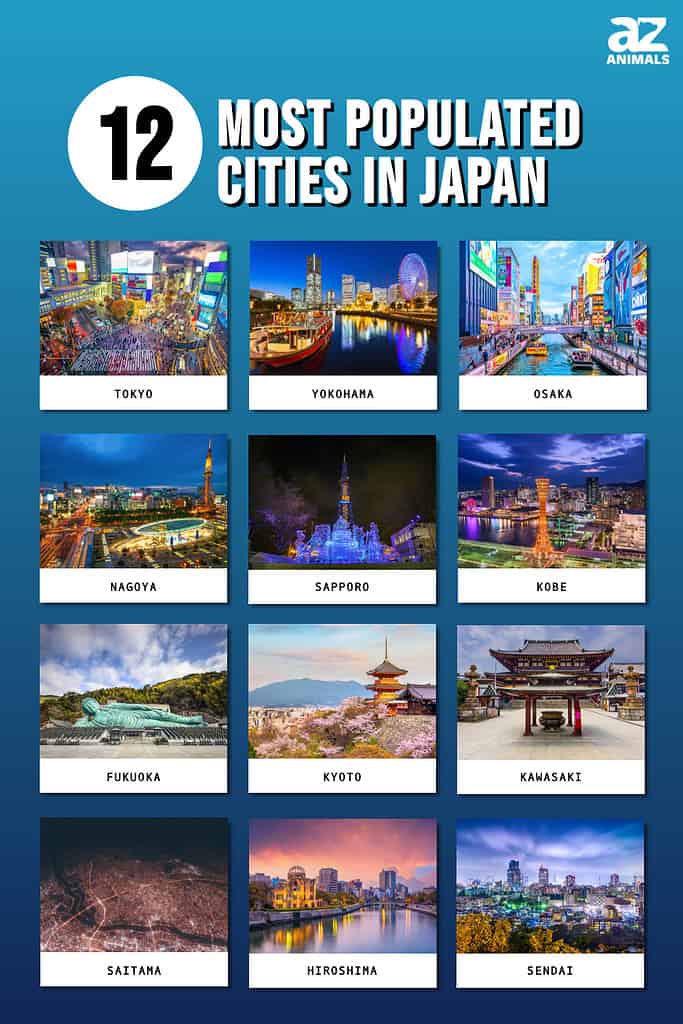
In Japan, there are over 800 different cities with varying populations. Tokyo is the most populated region in Japan and is the largest metropolis in the world. Tokyo is technically not a city but is actually a prefecture and the capital of Japan. Prefectures in Japan were created in 1868, and in total, there are 47 of them. The largest cities in a prefecture are usually the capital of their region. Let’s get into Japan’s cities with the most populations.
12. Sendai
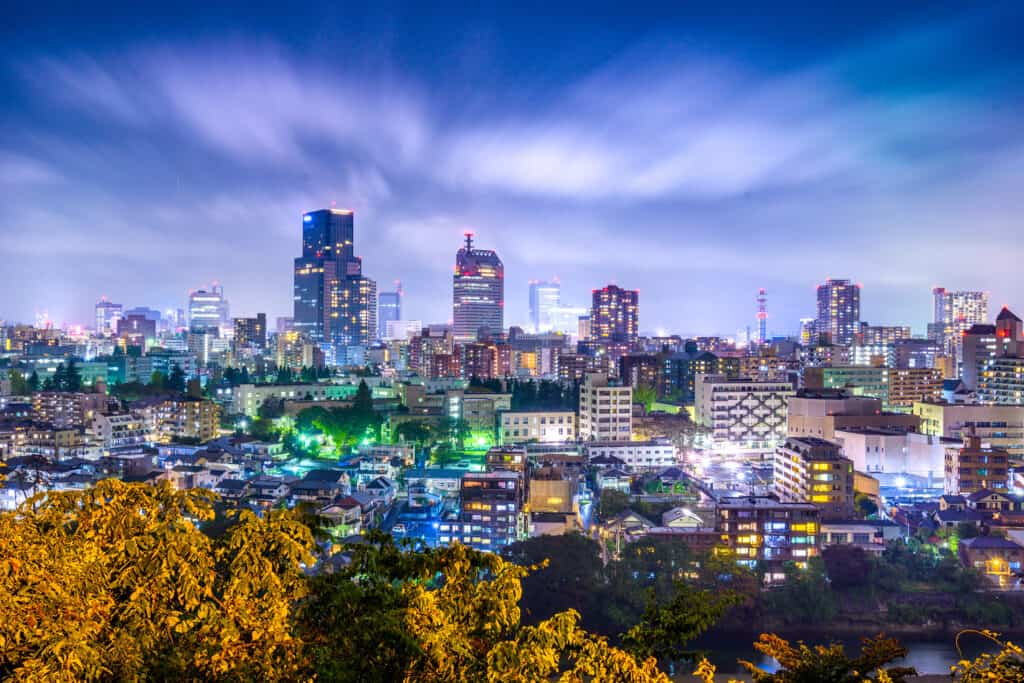
The green city of Sendai is divided into five districts and, along with its large population, has plenty to experience.
©Sean Pavone/Shutterstock.com
In 2022, the city of Sendai will have an estimated population of 1,060,263 and is currently the 12th most populated city in Japan. Located in the prefecture of Miyagi, Sendai is its capital city and also the largest city in the Tōhoku region. 601 is when Sendai was founded, and it holds the nickname the “The City of Trees” since it was once one of Japan’s greenest cities.
In 2011 on March 11, an earthquake struck the ocean 80 miles off the east of Sendai, causing a massive tsunami that hit the country’s coast. e tsunami and earthquake affected Sendai and other cities in the Tohoku region. This earthquake was one of the strongest of the century, and it moved mainland japan’s coast 8 feet.
The green city of Sendai is divided into five districts and, along with its large population, has plenty to experience. The city is around 303.4 mi² large and is home to festivals like the Sendai Tanabata. The Sendai Tanabata is one of Japan’s largest and most elegant festivals, showcasing some beautiful Japanese cultures.
11. Hiroshima
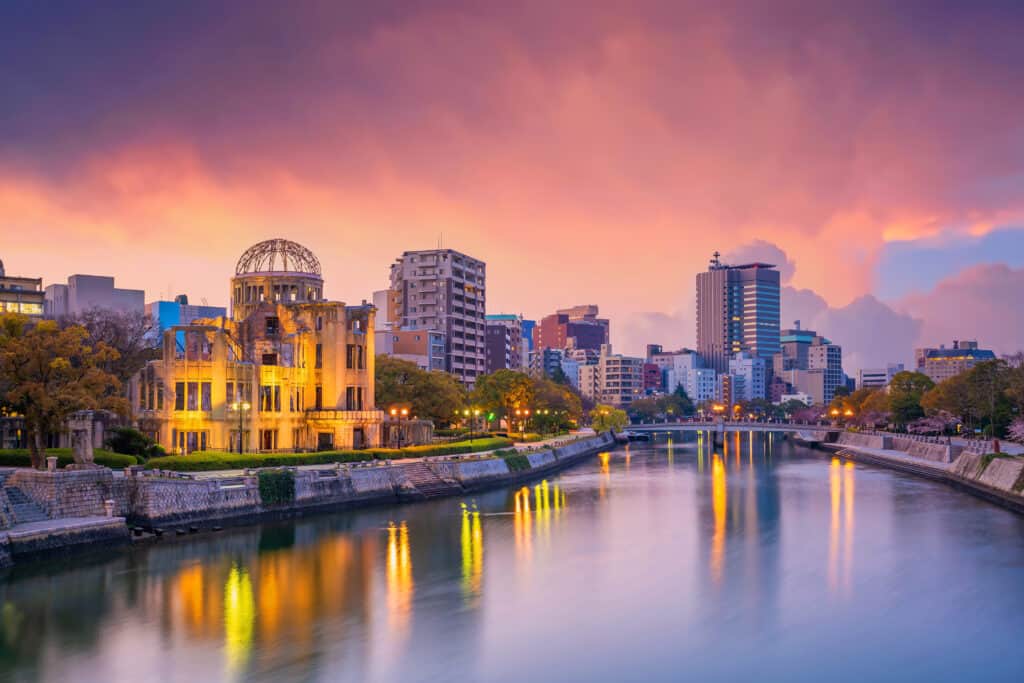
The city of Hiroshima has an estimated population of 1,119,391 and is the largest city in the region of Chūgoku.
©f11photo/Shutterstock.com
Hiroshima is one of the prefectures in Japan and is also the name of its capital. The city of Hiroshima has an estimated population of 1,119,391 and is the largest city in the region of Chūgoku. The city is around 350.1 mi² large and is located in the southwestern area of Honshu, Japan’s largest island.
The city of Hiroshima is the city that had the first atomic bomb dropped on it, occurring on August 6, 1945, during WW2. The tragedy killed over 260,000 people and injured over 160,000 others. Today the city has moved past its dark history and is one of the most populated areas in Japan. Memorials, museums, and various restaurants serving local dishes are available to visit. The Atomic Bomb Dome is the city’s most famous attraction and is a ruin that serves as a memorial for those who lost their lives.
10. Saitama

Saitama is only 16.7 miles (27 km) from Tokyo and is part of the greater Tokyo metropolitan area.
©Hairem/Shutterstock.com
Located in the Kanto region of the island of Honshu in Japan, Saitama is the most populated and capital city of the Saitama Prefecture. In 2022 the city’s estimated population will be 1,324,800 and is around 83.95 mi² large. Saitama is only 16.7 miles (27 km) from Tokyo and is a part of the greater Tokyo metropolitan area.
The city of Saitama is popular for its bonsai trees, and a part of the city is also called Bonsai Village. You can find several bonsai nurseries and museums specializing in caring for these small trees. There are also several museums and attractions for sightseeing like the cherry blossom fields or Kinchakuda Higabana field that blooms in the Autumn.
9. Kawasaki
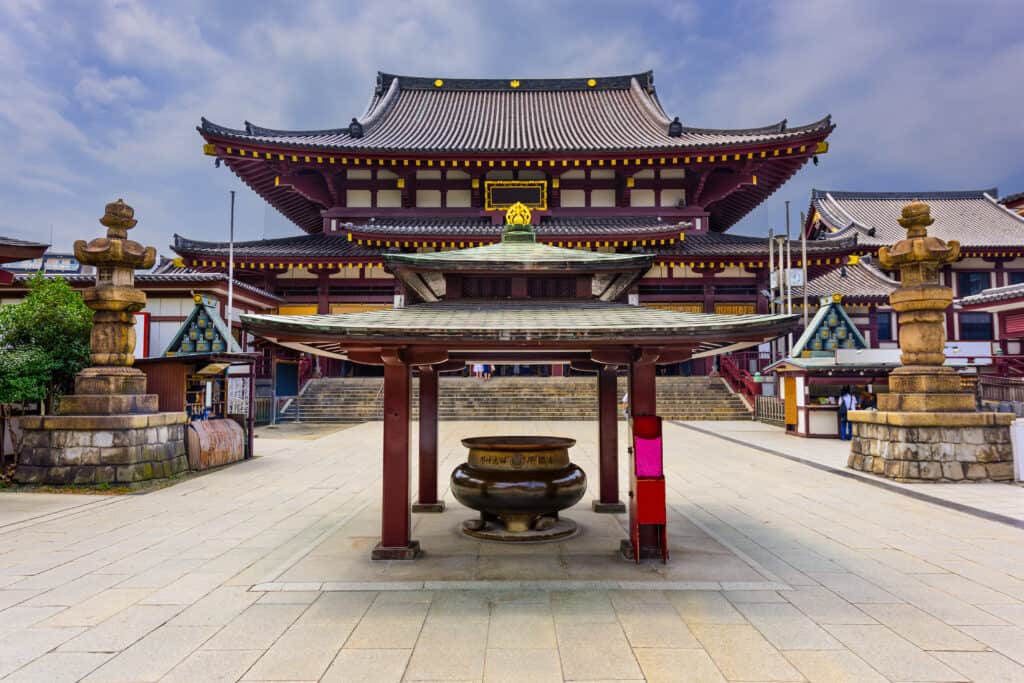
In Kawasaki, there are historical sites like temples and traditional Japanese villages.
©Sean Pavone/Shutterstock.com
Kawasaki is one of the few cities in Japan with a population of over a million that is not the capital of a prefecture. This city is located in the Kanagawa prefecture of Japan and has a population of around 1,420,000. Kawasaki is a part of the Greater Tokyo Region and is only 11.18 (18 km) away from Japan’s most populated city.
Kawasaki is a bustling city, and within it is located the Keihin industrial area, one of Japan’s biggest industrial regions. In Kawasaki, there are historical sites like temples and traditional Japanese villages. The city is most known for its bustling industrial industry.
8. Kyoto
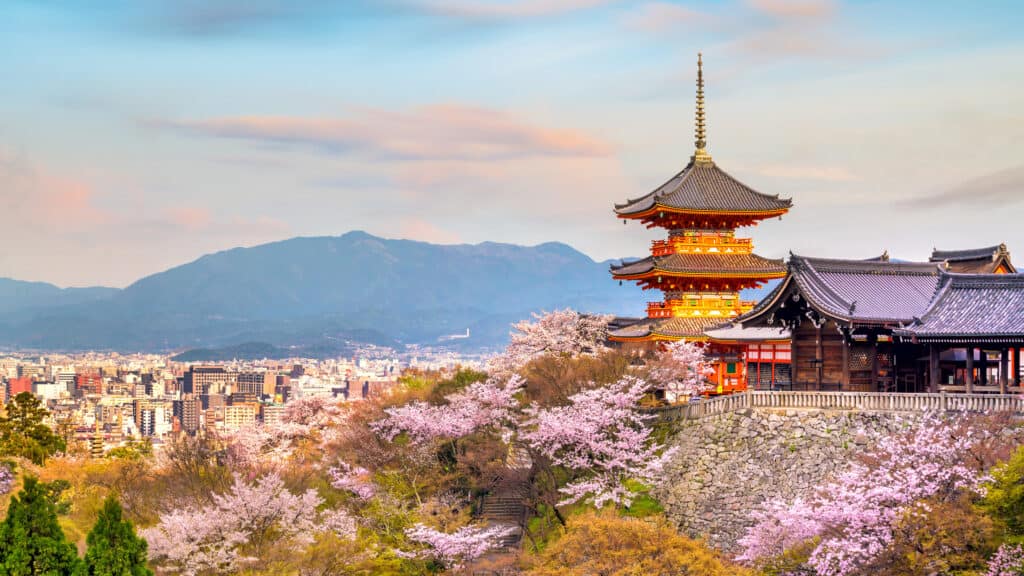
Kyoto is one of the oldest cities in Japan and was founded in the year 794.
©f11photo/Shutterstock.com
Kyoto city is the capital of the Kyoto Prefecture in the Kansai region on the Japanese island of Honshu. The city’s population is estimated to be around 1,470,000, and the city of Kyoto is around 319.6 mi². Kyoto is one of the oldest cities in Japan and was founded in the year 794. This historic city has several cultural landmarks and over 1600 temples.
Geisha culture can be seen everywhere in the city, and there are plenty of shrines, gardens, shops, and places to eat. Besides being one of Japan’s most populated cities, Kyoto is also the 7th largest in the country.
7. Fukuoka
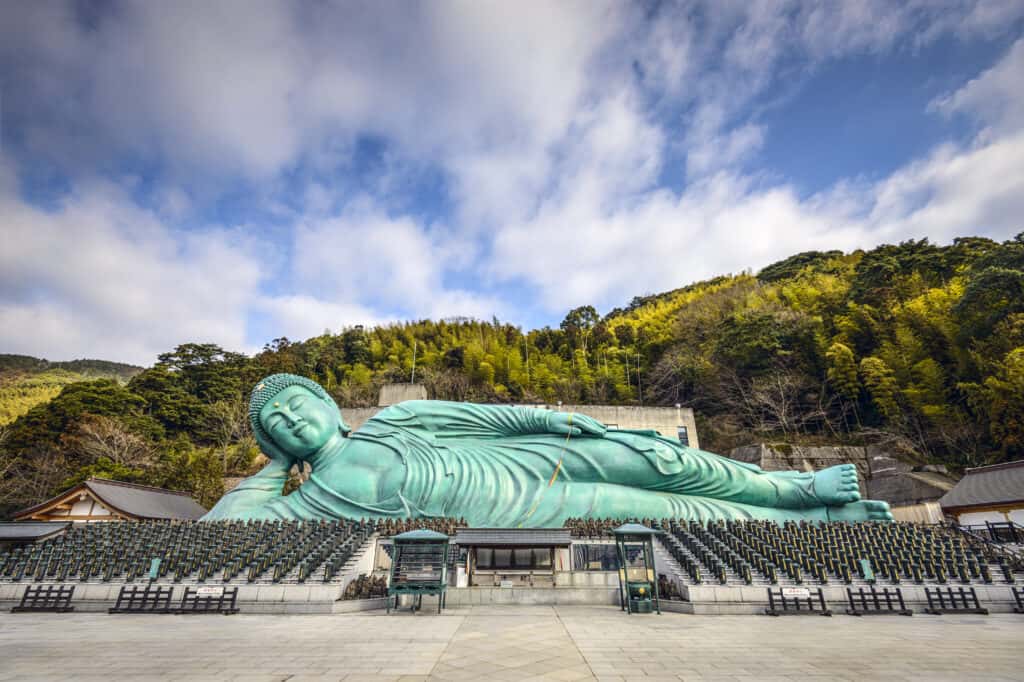
Fukuoka is located in northern Kyushu and is the capital of the prefecture of Fukuoka ken.
©ESB Professional/Shutterstock.com
With a size of 132.6 mi², Fukuoka is the sixth largest city in Japan and has an estimated population of around 1,482,000. This city is located in northern Kyushu and is the capital of the prefecture of Fukuoka ken. The Fukuoka of today is the result of merging the port city Hakata and the castle city of Fukuoka in 1889, but the region has been inhabited since 57 AD.
Surprisingly Fukuoka is actually closer to Seoul, the capital of South Korea, than it is to Tokyo. The city is a major tourist attraction in Japan and has beaches, fresh seafood restaurants, and yearly festivals like the Hakata Dontaku. Fukuoka is a seaside city with amazing sights like the Nanzoin Temple, which contains one of the largest bronze statues in the world of a reclining Buddha.
6. Kobe
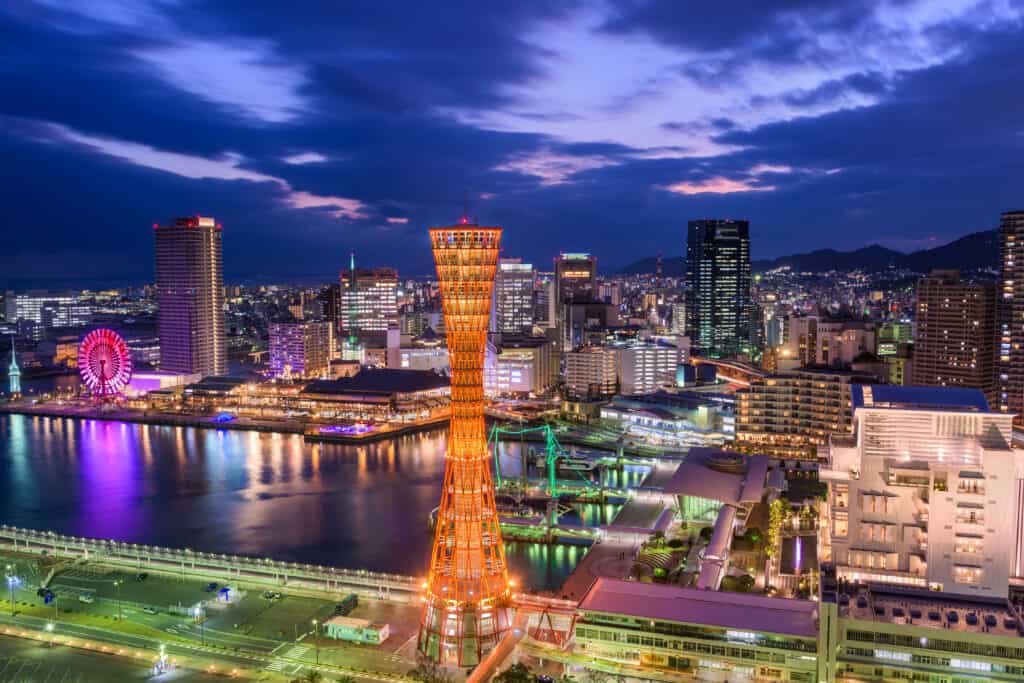
Kobe is the third largest port city in Japan.
©Sean Pavone/Shutterstock.com
Kobe is the city capital of the Hyogo Prefecture and can be found in the Kansai region on the southern coast of Japan’s main island Honshu. With a size of 213.2 mi², Kobe is the third largest port city in Japan. The city has an estimated population of 1,544,000. Kobe became one of the designated cities in Japan in 1956 but was founded in 1889.
Kobe beef is world famous, making this Japanese city stand out from the rest, as Kobe Japan is the premium meat city of origin. In Kobe, there are also various landmarks, zoos, and breweries. The city is located right by the sea and by the Rokko Mountains.
5. Sapporo
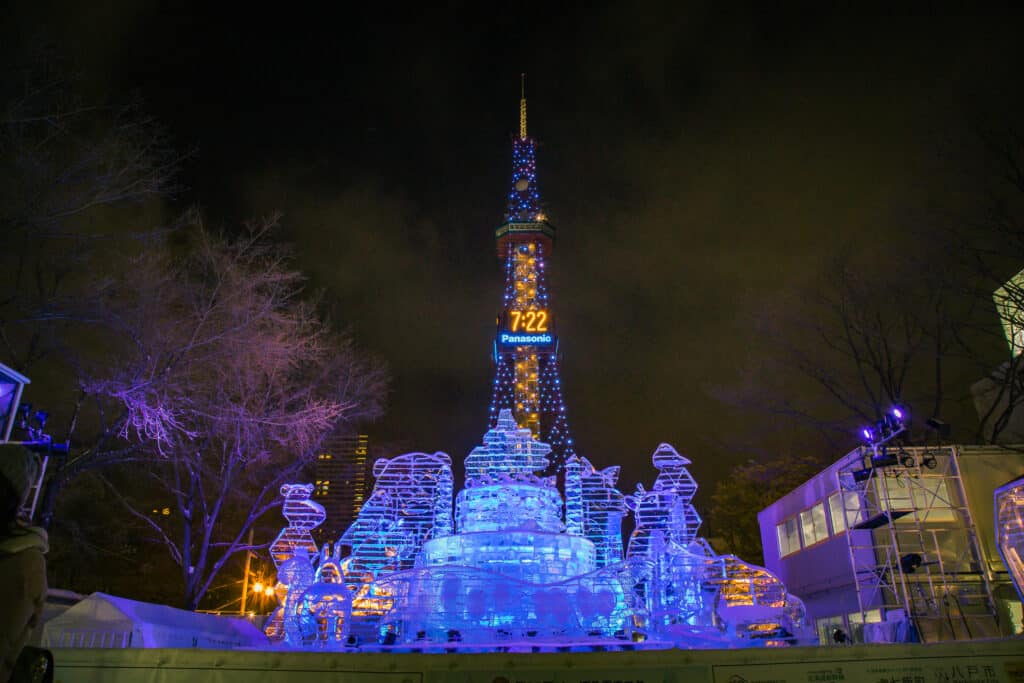
Sapporo is the fifth largest city in Japan and the largest major city north of Tokyo.
©Mai.Chayakorn/Shutterstock.com
Located on Hokkaido island in Japan, Sapporo has an estimated population of 1,906,000. This city is the capital of its prefecture and has a size of 433 mi². This Japanese city was officially founded in 1868 and became extremely popular when it hosted the Olympic Winter Games in 1972. Sapporo is the fifth largest city in Japan and is the largest major city north of Tokyo.
Winter festivals are held yearly in this city, and when the cold hits, that are the best time to visit this city. Hotsprings, ski resorts, and ice fishing are things to do in Sapporo. Winter brings an incredible experience to the city, but there are breweries, local food, shops, and landmarks to see year-round.
4. Nagoya

Along with being a port city, Nagoya is a hub for Japanese culture and an essential city for the Japanese auto industry.
©Pajor Pawel/Shutterstock.com
Nagoya is the capital of the Aichi ken prefecture in Japan and is one of the largest cities in the Chubu or the Central Region of Japan. This city has a size of around 126 mi², with an estimated population of 2,266,000. Along with being a port city, Nagoya is a hub for Japanese culture and an essential city for the Japanese auto industry.
In Nagoya, several museums show Japan’s art and industrial achievements. Nagoya is filled with restaurants serving food like ramen, udon, tebasaki, and other local delicacies. The city also has the largest and busiest port in Japan, accounting for about 10% of Japan’s trade value.
3. Osaka
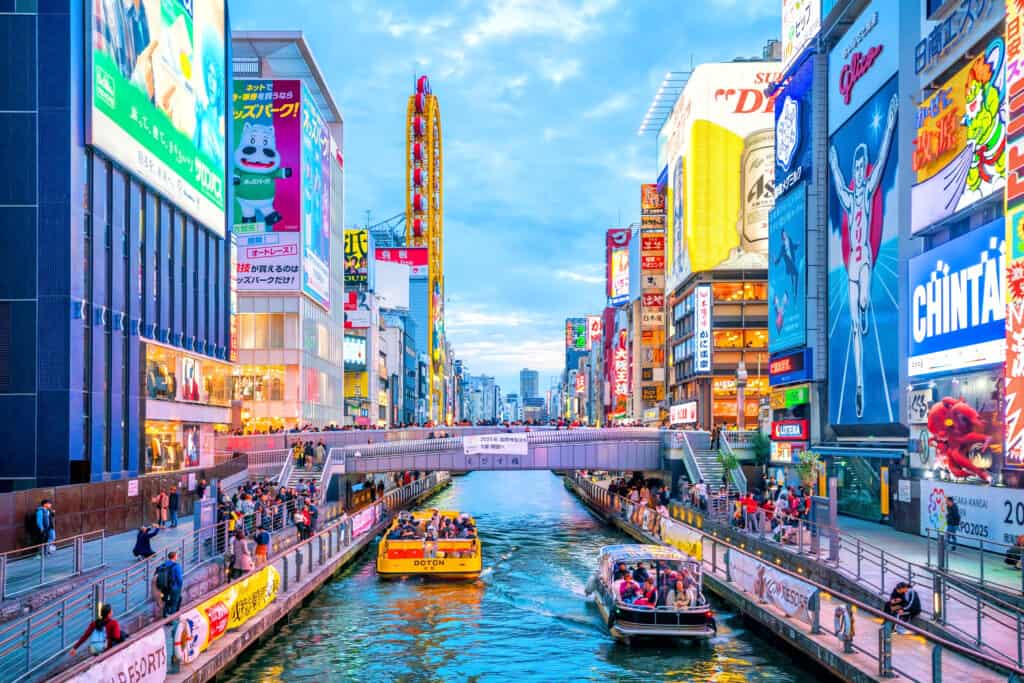
Osaka Prefecture is the second largest metropolitan area in Japan and has a population of around 19,300,746.
©f11photo/Shutterstock.com
Osaka Prefecture is located in the Kansai region on the island of Honshu. The city capital of this prefecture is also called Osaka and has an estimated population of around 2,750,000. Osaka is a part of the Keihanshin major metropolitan area, the second largest metropolitan area in Japan, with a population of around 19,300,746. The city of Osaka has a size of 86.1 mi².
The city of Osaka showcases the vibrant Japanese culture and is famous for its various street vendors and snacks. In Osaka, you can find castles, shrines, and various beautifully crafted buildings that represent Japanese culture. Osaka was the first capital of Japan and is known for the various merchants that sell their goods in the city.
2. Yokohama
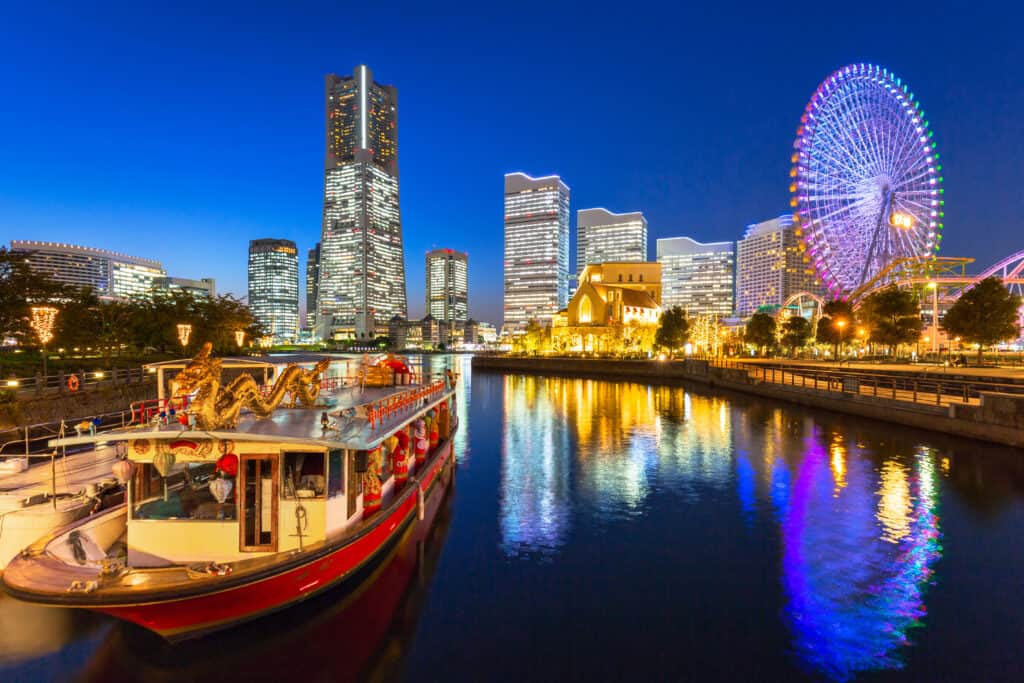
With a size of 168.9 mi², Yokohama is the second largest city in Japan.
©Patryk Kosmider/Shutterstock.com
Yokohama is the second most populated city in Japan and has an estimated population of around 3,790,000. With a size of 168.9 mi², Yokohama is the second largest city in Japan. It is the capital of the Kanagawa Prefecture and is located south of the Kanto region in Tokyo Bay. For much of its lifetime, the city was a small fishing village. The year 188 was when the city was established, influenced by the country’s growth in foreign trade and the Yokohama Port. Yokohama is cheaper to visit than Tokyo but still offers much of what Tokyo is loved for.
1. Tokyo
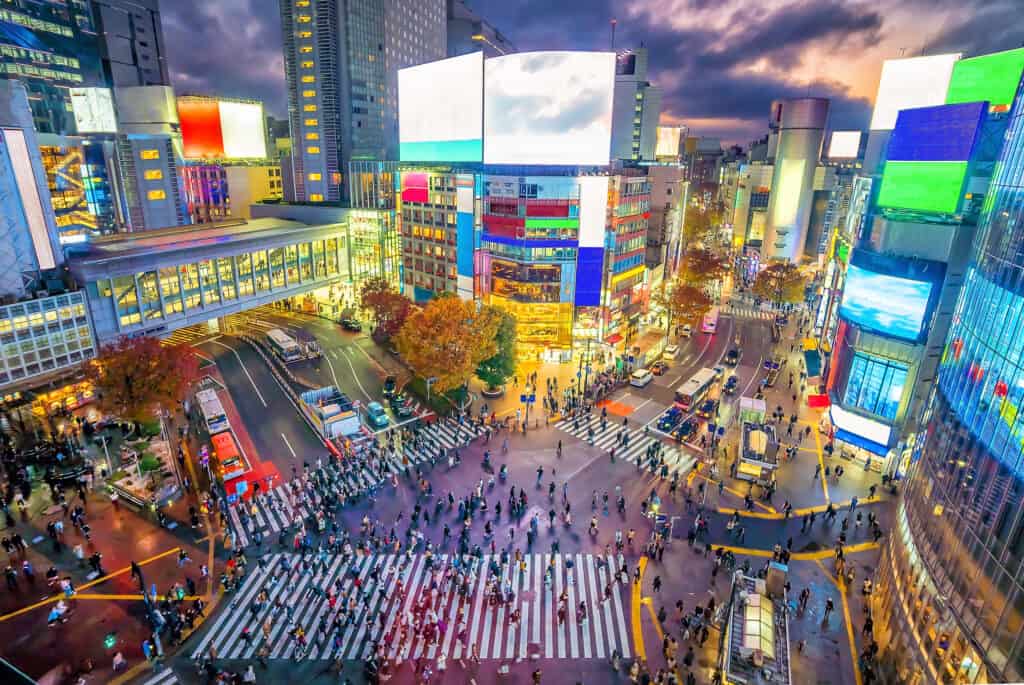
Tokyo is 847mi² large and has an estimated population of 8,956,000, the greater Tokyo area having an estimated population of around 13,960,000.
©f11photo/Shutterstock.com
While not actually a city, Tokyo is Japan’s largest and most populated region. Tokyo is 847mi² large and has an estimated population of 8,956,000, with the greater Tokyo area having an estimated population of around 13,960,000. Tokyo’s metropolis region is the world’s largest metropolis and comprises the prefectures of Chiba, Gunma, Saitama, Tochigi, Kanagawa, and Ibaraki.
Tokyo is the capital of Japan, but the city was originally called Edo. The name was changed in 1868, also when it became the capital. What makes Tokyo confusing is that it is not an actual city but a prefecture divided into 23 special wards. The region has 26 cities, 3 towns, and a village.
Summary of the 12 Most Populated Cities in Japan
| Rank | City | City Population (2022 Estimate) | City Prefecture |
|---|---|---|---|
| 12. | Sendai | 1,060,263 | Miyagi |
| 11. | Hiroshima | 1,119,391 | Hiroshima |
| 10. | Saitama | 1,324,800 | Saitama |
| 9. | Kawasaki | 1,420,000 | Kawasaki |
| 8. | Kyoto | 1,470,000 | Kyoto |
| 7. | Fukuoka | 1,482,000 | Fukuoka |
| 6. | Kobe | 1,544,000 | Hyogo |
| 5. | Sapporo | 1,906,000 | Hokkaido |
| 4. | Nagoya | 2,266,000 | Aichi |
| 3. | Osaka | 2,750,000 | Osaka |
| 2. | Yokohama | 3,790,000 | Kanagawa ken |
| 1. | Tokyo | 8,956,000 | Tokyo |
The photo featured at the top of this post is © f11photo/Shutterstock.com
Sources
- Population of Japan , Available here: https://data.worldbank.org/indicator/SP.URB.TOTL.IN.ZS?locations=JP
- The Most Populated Cities in Japan , Available here: https://www.nationsonline.org/oneworld/japan_cities.htm
- Japanese Prefectures and Major Cities , Available here: https://www.citypopulation.de/en/japan/cities/
Thank you for reading! Have some feedback for us? Contact the AZ Animals editorial team.






